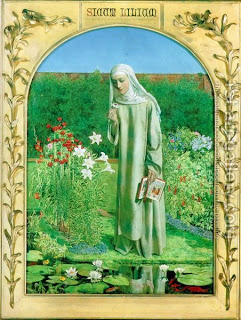Hildegard von Bingen (1098-1179) Germany Much has been written about this remarkable woman. She has been and continues to be studied by scholars in diverse fields that include spirituality, theology, music, medicine, herbalism, and illumination (illustration). She was also a visionary and prophet. Hildegard had the intellect and the opportunity to address her numerous talents to all these fields. I will attempt to give you some idea of her life with an emphasis on her interest in medicine and herbalism. Hildegard was the 10th child born to a noble family. Traditionally the 10th child is given to the church as tithe, and so at the age of 8 Hildegard was sent to the Benedictine monastery of Disibodenburg in Bingen for…


